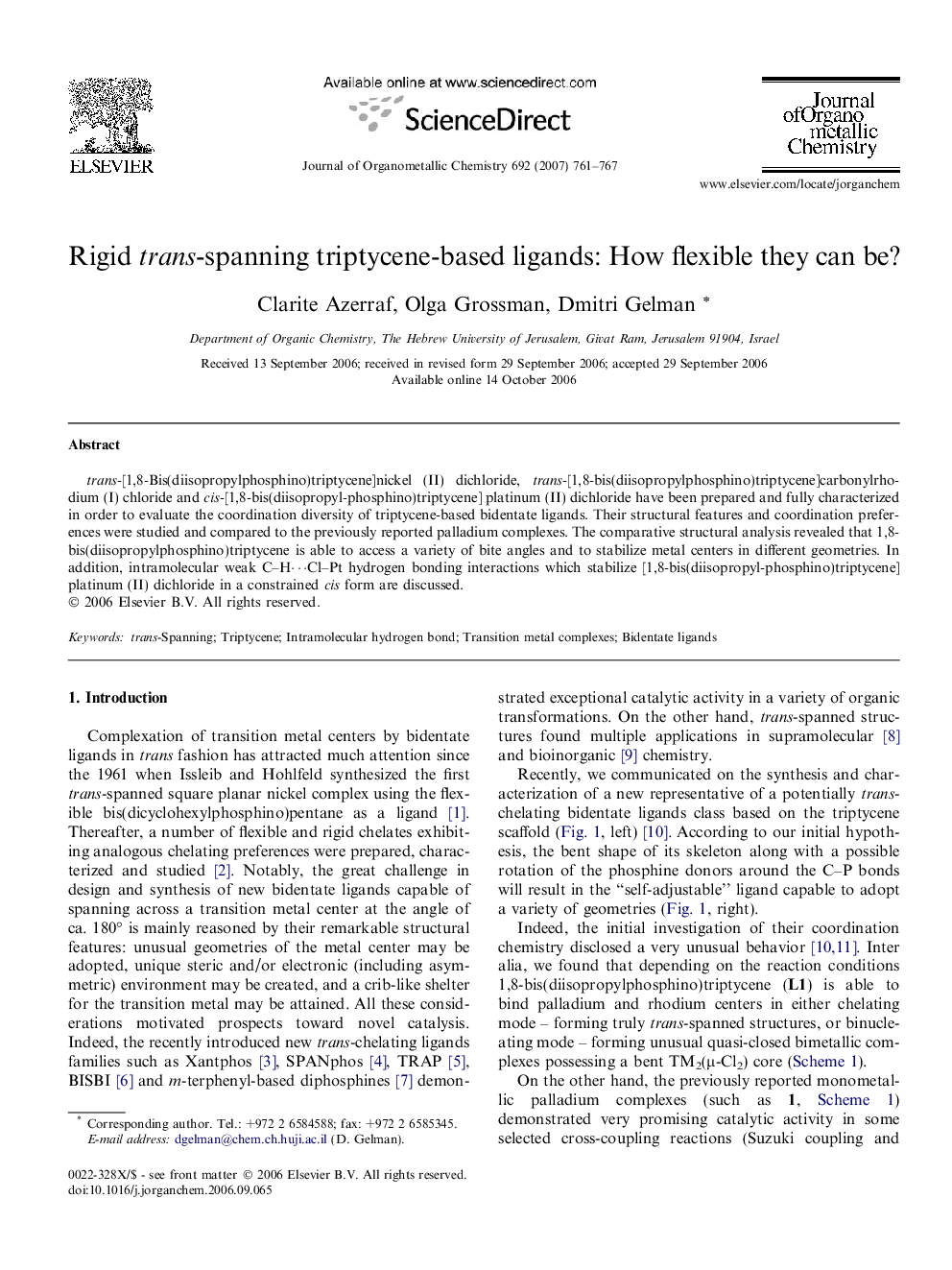| کد مقاله | کد نشریه | سال انتشار | مقاله انگلیسی | نسخه تمام متن |
|---|---|---|---|---|
| 1323563 | 977295 | 2007 | 7 صفحه PDF | دانلود رایگان |

trans-[1,8-Bis(diisopropylphosphino)triptycene]nickel (II) dichloride, trans-[1,8-bis(diisopropylphosphino)triptycene]carbonylrhodium (I) chloride and cis-[1,8-bis(diisopropyl-phosphino)triptycene] platinum (II) dichloride have been prepared and fully characterized in order to evaluate the coordination diversity of triptycene-based bidentate ligands. Their structural features and coordination preferences were studied and compared to the previously reported palladium complexes. The comparative structural analysis revealed that 1,8-bis(diisopropylphosphino)triptycene is able to access a variety of bite angles and to stabilize metal centers in different geometries. In addition, intramolecular weak C–H⋯Cl–Pt hydrogen bonding interactions which stabilize [1,8-bis(diisopropyl-phosphino)triptycene] platinum (II) dichloride in a constrained cis form are discussed.
A series of transition metal complexes bearing the strongly triptycene-based ligand have been prepared and fully characterized. Their structural features and coordination preferences were studied and compared to the previously reported structurally related compounds.Figure optionsDownload as PowerPoint slide
Journal: Journal of Organometallic Chemistry - Volume 692, Issue 4, 15 January 2007, Pages 761–767